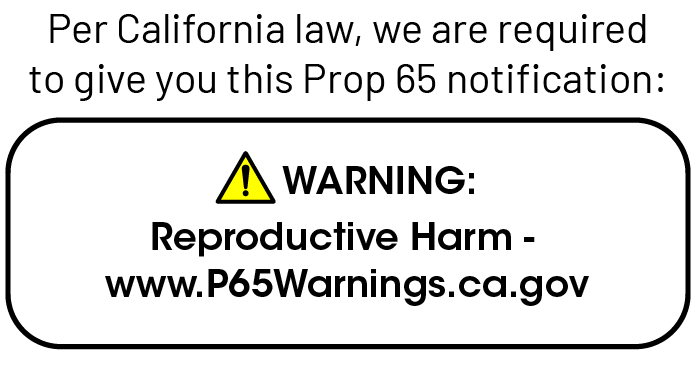How to DIY Vitamin A Companion Cream | Skin Actives
Posted by Brendan Leonard on Feb 1st 2022
Welcome to the latest in our series of DIY recipes that make sense: they’re inexpensive, give you value for your money and they work. And, most importantly, they’ll benefit your skin and not hurt it!
DIY skincare can be a hobby, a passion, or just fun. We’re for any and all of those motivations. But, please remember to always be careful! Read the instructions fully before you begin and don’t please don’t deviate from them. We’re talking about your skin, not a t-shirt that can be discarded if a tie-dye goes wrong.
Today we’ll be making a DIY Vitamin A Companion Cream!
What Are the Benefits to Using Vitamin A Cream?
There are a lot of reasons why you might consider adding a vitamin A cream to your regimen, here are just a few:
- Anti-aging/wrinkle reduction - As we all know, collagen production peaks in our early twenties and then declines each year as we age. Collagen production is critical to skin thickness and elasticity, which become hallmarks of youth, and their absence shows aging. Fortunately, vitamin A is just one way for you to promote collagen production, making Vitamin A Cream perfect for layering.
- Minimizes Breakouts - Your skin’s natural oils can be used against it when dead skin cells block and clog pores. Vitamin A gently removes dead skin cells helping to prevent these blockages and the inflammation that accompanies them.
- Evens Out Complexion - As we discussed in the blog previously, exposure to excess UV can lead to sun damage in the form of hyperpigmentation. Vitamin A has been shown to reduce hyperpigmented spots leading to smooth transitions in complexion.
- Brightens Dull Skin - When you take all the above factors into account, you’ll find that your skin’s lustre has returned, so vitamin A is used for its skin brightening effect.
When to Apply Vitamin A Night Cream
Vitamin A is a sort of generic way of discussing the much more scientifically specific category of retinols. If you’d like to learn more about retinols, check out this entry in our blog. As you may know, retinols provoke sensitivity to sunlight, which makes when you use Vitamin A Cream just as important as how you use it.
Use at Night - Retinols interact with sunlight and can actually cause skin damage so it’s very important that you limit your use of Vitamin A Cream to night. You may find that while using retinols, your skin is very sensitive to exposure to sunlight, so make sure you use sunscreen and limit your time in the sun (but you were probably doing that anyway).
Apply Only As Much As Needed - The latest trend in retinol usage revolves around the “gentlest” use. At Skin Actives we already go out of our way to make sure that the vitamin A found in our products is sourced from the gentlest retinols, so that you don’t have to worry about harming your skin or discomfort. That said, a little goes a long way and more is not necessarily better. Only use as much vitamin A cream as you need, don’t overdo it.
Listen to Your Body - If you start using a vitamin A cream and find that your skin is feeling more sensitive or inflamed, discontinue use. Your skin’s health is the most important thing!
Now, here’s a Do-It-Yourself formula written by the founder of Skin Actives Scientific, Dr. Hannah Sivak:
Mix Your Own Vitamin A Companion Cream
This is a great project because there is nothing like it in the market.
A Vitamin A companion cream is designed to address the broken skin barrier that you get when you use retinoids. Using our Vitamin A Cream is less likely to give you this kind of trouble. The problem is acute with products like Retin-A, a very irritating (sort of bull-in-the-china-shop) retinoid. So, if you are using Retin-A or take oral retinoids, you should strongly consider whipping up a batch of this Vitamin A companion!
Step by Step Instructions
Implements you will need:
- A small spatula or mini-whisk
- Paper towels to cover the surface where you will work
- Isopropyl alcohol to sterilize your implements. You can find this for about $2 for 16 oz. at your local pharmacy or supermarket. We recommend using a spray bottle to dispense the alcohol.
- A small bowl for mixing all your ingredients.
- Plus a notebook where you will write all the details so, if you are happy with the result of your project, you will be able to duplicate it.
Ingredients:
- One 4 oz. jar of Skin Actives Canvas Cream,
- One tablespoon of Collagen Serum. This will provide the nutrients your skin needs to follow the instructions given by the retinoid. The epidermal growth factor already included in the serum will complement the instructions.
- Half a teaspoon of Every Lipid Serum. This provides the lipids you need to strengthen the skin barrier, plus antioxidants, so you can add a little more or a little less to your preference.
- 5 grams of petrolatum (aka petroleum jelly). You’ll be able to find this at your local supermarket for about $2 for 16oz. Remember that some of the most expensive creams on the market (including some that are priced at $300 per oz.) use this ingredient. You can adjust the amount you are using to your preference, but start low because you may need to get used to the texture.
- DO NOT add essential oils or fragrance, they may worsen the irritation and stinging! This is NOT what you want to do to your skin that is already struggling with irritation.
Mixing:
You can do all the mixing at room temperature. Add the ingredients in the order listed above. Use a spatula or a small whisk until you get a homogeneous cream.
And there you have it! Your first DIY skincare project! We hope that it was fun and leaves your skin feeling great. Check out our webstore for the active ingredients necessary to continue blending your own DIY projects and look for more recipes coming in a newsletter soon.
Get your ingredients here online and ready-made products too.
If you’d like to read more by Dr. Sivak, check out her personal blog, here.
Thanks for stopping by the Skin Actives Scientific blog, we have more content coming for you most Tuesdays and Fridays, check us out!

